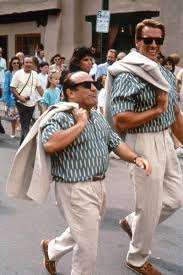How do you undo a bad hair transplant? I see many of them on men in stores and at work.

Hair transplant has been referred to as “plugs” and still carry that negative connotation because the transplanted hairs actually looked like “plugs”. These type of surgery were pre 1990’s work when doctors were not transplanting follicular units. Those big plugs are still around on the heads of thousands if not millions of patients. We’ve (New Hair Institute) been correcting or fixing the “bad work” for over 23 years since we opened. Instead of a lengthy explanation of how it is done, the flowing before and after photos reviews the corrective hair transplant surgeries performed by New Hair Institute over the years.
You can also see them here

Repair of Hair Transplant Plugs: The old plugs that created his unnatural looking hairline were cut out and then transplanted back in a more natural looking pattern. A total of 1212 grafts were placed in this repair surgery.

Repair of Hair Transplant Plugs: In the repair phase, the large grafts were dissected into their individual follicular units and re-implanted. One procedure of FUT provided excellent camouflage. A second session will be considered to increase fullness.

Repair of Hair Transplant Plugs: Mr. AQ had old plugs that failed to grow hair. Note the visible white scars produced by the hairless plugs. After the repair with one procedure of Follicular Unit Transplantation, the scarring was undetectable and the patient let his hair grow naturally gray.

Repair of hair Transplant Plugs: Patient JG had extensive scarring from a sew-on hairpiece and 3 hair transplant sessions using plugs, many of which didn’t grow well. Luckily, the patient had salt & pepper hair, ideal hair for a repair. Dramatic improvement was accomplished with just one session, although JG planned a second session. One problem that we could not correct was the very low hairline.

Repair of Hair Transplant Plugs: This patient had very noticeable plugs done earlier in his life and he was unhappy with the way they looked. Being a Norwood 5A, he also had very thin hair all over his head as you can see from the top-down photos we took. After three procedures totaling 5405 grafts, we were able to not only hide the plugs that he had, but we were also able to achieve a very full looking head of hair from nearly any viewing angle.

Mr. AS had a very pluggy frontal hairline from the old plug technique. A slight Widow’s Peak was created to break up the straight-line appearance of the hairline and to camouflage the plugs. This repair was accomplished with just one session of Follicular Unit Transplantation. A second session will make it perfect.

Repair of Hair Transplant Plugs: Plugs placed within patient’s old hairline by another transplant center were not too noticeable at first. However, with further hair loss, the poorly planned transplant became very unnatural. Fortunately for the patient, the old plugs were located high enough so that a dramatic camouflage was achieved with just one session of Follicular Unit Transplantation.

Repair of Hair Transplant Plugs: This patient is a 37 year-old man who had three procedures performed at another clinic. He was dissatisfied with the pluggy results. We transplanted 1,947 follicular grafts to camouflage the old plugs.

Repair of Hair Transplant Plugs: A 38 year-old man came to NHI dissatisfied with a hair transplant he had at another clinic. In his first surgery at NHI, he had his pluggy hairline removed, re-dissected, and re-transplanted. During his second surgery, his remaining plugs (not in the hairline) were removed. In his third surgery, he received 1,696 follicular units, and his results were great, but are still not complete.

Repair of Hair Transplant Plugs: Patient BII has medium weight hair of above average density (2.5/mm2). Two original sessions of large mini-grafts resulted in a hairline that was lopsided and pluggy. The patient was treated at NHI with two sessions of Follicular Unit Transplantation after some of the larges mini-grafts in the very front were removed. The hair from those grafts were subdivided under the microscope and re-implanted. We always use every single follicle!

Repair of Hair Transplant Plugs: Joe Penny came to our office a few years back to fix a bad hair transplant that utilized the old plug technique. As you can see, his three sessions totaling 3811 grafts turned out quite well.














